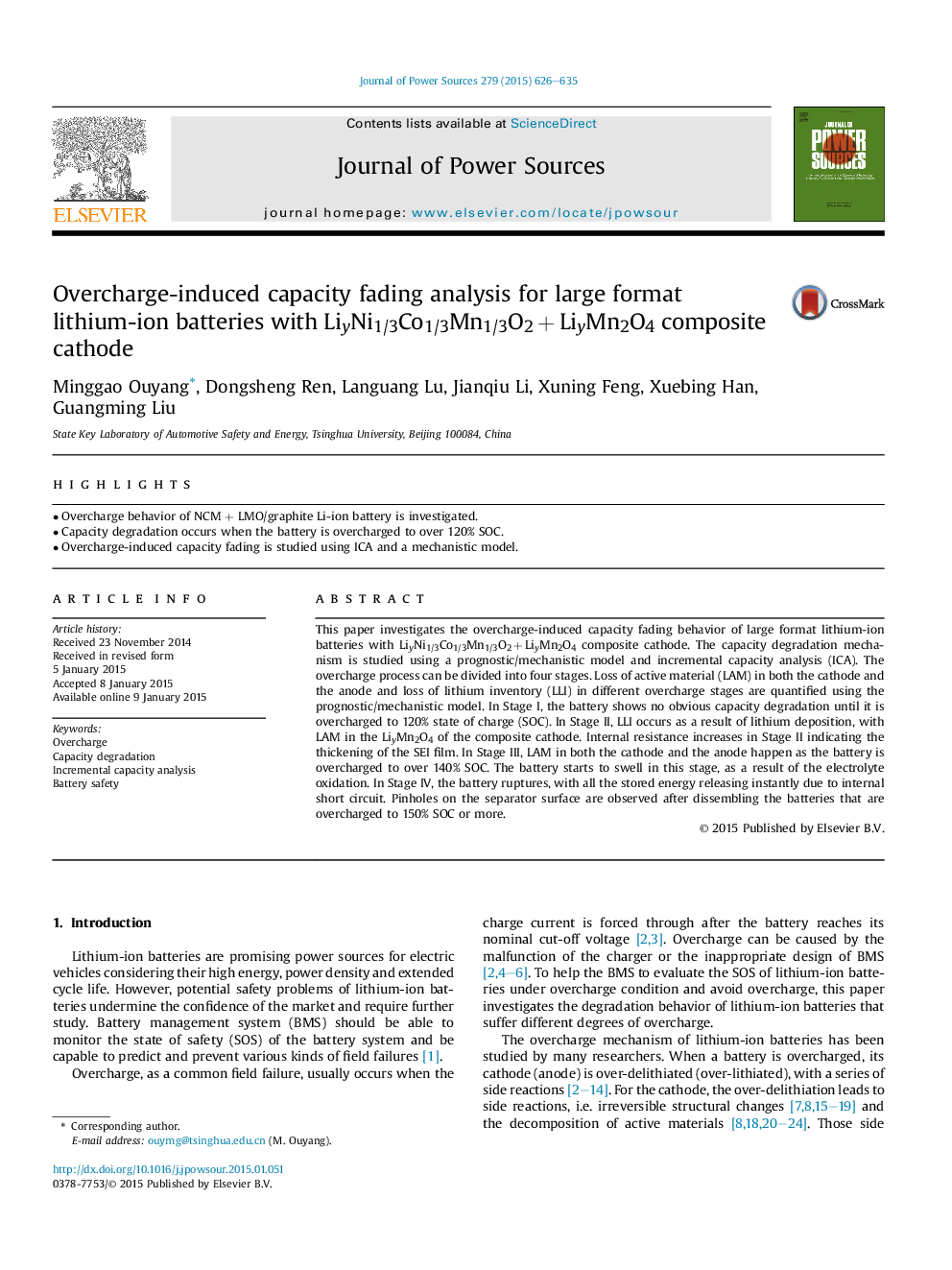| Article ID | Journal | Published Year | Pages | File Type |
|---|---|---|---|---|
| 7733912 | Journal of Power Sources | 2015 | 10 Pages |
Abstract
This paper investigates the overcharge-induced capacity fading behavior of large format lithium-ion batteries with LiyNi1/3Co1/3Mn1/3O2Â +Â LiyMn2O4 composite cathode. The capacity degradation mechanism is studied using a prognostic/mechanistic model and incremental capacity analysis (ICA). The overcharge process can be divided into four stages. Loss of active material (LAM) in both the cathode and the anode and loss of lithium inventory (LLI) in different overcharge stages are quantified using the prognostic/mechanistic model. In Stage I, the battery shows no obvious capacity degradation until it is overcharged to 120% state of charge (SOC). In Stage II, LLI occurs as a result of lithium deposition, with LAM in the LiyMn2O4 of the composite cathode. Internal resistance increases in Stage II indicating the thickening of the SEI film. In Stage III, LAM in both the cathode and the anode happen as the battery is overcharged to over 140% SOC. The battery starts to swell in this stage, as a result of the electrolyte oxidation. In Stage IV, the battery ruptures, with all the stored energy releasing instantly due to internal short circuit. Pinholes on the separator surface are observed after dissembling the batteries that are overcharged to 150% SOC or more.
Related Topics
Physical Sciences and Engineering
Chemistry
Electrochemistry
Authors
Minggao Ouyang, Dongsheng Ren, Languang Lu, Jianqiu Li, Xuning Feng, Xuebing Han, Guangming Liu,
